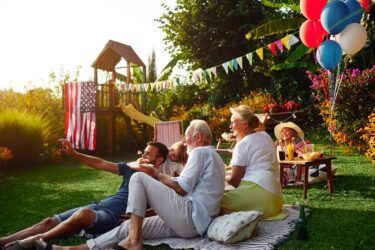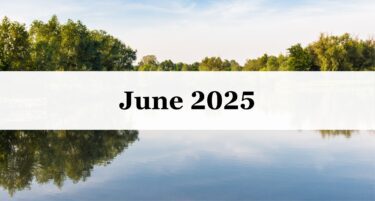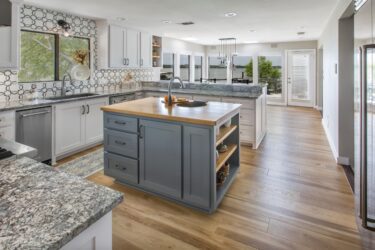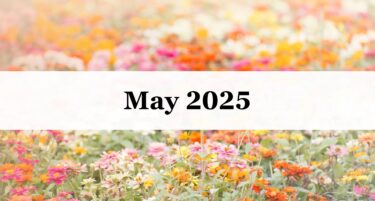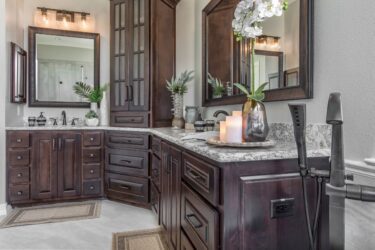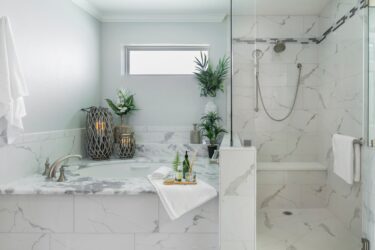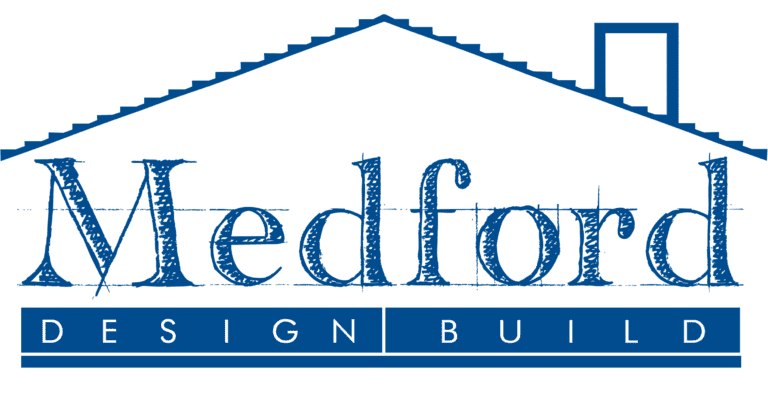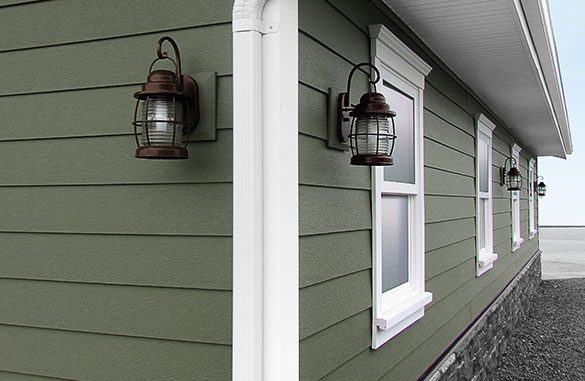
Photo Source
Your home’s exterior siding isn’t just for aesthetic purposes; it’s your home’s first defense against the harsh elements. Maintaining and eventually replacing your siding is an important task if you want to keep your home in good condition and prevent issues like water damage, mold, wood rot, and energy inefficiency. If left unaddressed, these issues can get out of control and become very costly to repair. This is why it’s so important to know your options when replacing your home’s siding and use the material that will be best for your home long-term.
Here are some of the top siding material options to consider:
Natural Wood
Natural wood was the original siding used on homes but isn’t even considered on today’s construction unless it is used as an accent. The problem is the diligence it takes to keep it up, and its susceptibility to insects and weather damage. If it’s not properly maintained, it can become very expensive and problematic to repair and replace.
However, if you’re dead-set that you want natural wood, some of the popular options are pine, spruce, and cedar. This type of siding requires painting or staining, which does offer a unique look and nice curb appeal. It’s also an environmentally friendly choice, which is always a plus!
Engineered Wood
Engineered wood siding is a less expensive alternative to real wood siding and more durable. It’s composed of wood fibers and resins, made to mimic the look and feel of natural wood. It typically comes already primed or painted, so it’s more convenient in that aspect. The resin acts as a strong defense against pests and outdoor conditions, but it can crack and fade over time.
Composite Woods
Composite woods are manufactured from various products. Some of the names of these products over the years are Masonite, chip board, flake board, Smartboard, These sidings will typically hold up well if, like wood, they are diligently maintained. The problem is that if the maintenance is ignored, and the siding starts to absorb water and fail, it does so quickly and can easily get to the point of not being irreparable. These products are now banned in many cities.
Vinyl
Vinyl was introduced in the 60’s and became popular because of its low cost and easy maintenance. Like most vinyl products, technological advancements have made the product better and better. It’s now the most widely used material for exterior siding.
If properly installed, vinyl will hold up well against all types of weather, with an occasional washing being the only maintenance needed. It’s fairly affordable, and is available in an insulated version, providing great benefits when it comes to energy efficiency. Also, the panels come with the color infused throughout the vinyl itself, so it cannot flake or chip off.
The one known down-side to using Vinyl as exterior siding is that it has been known to warp in extreme heat, which can be an issue if you live somewhere hot like North Texas!
Fiber Cement
Fiber cement is a popular composite siding option. Made from a combination of substances such as wood fiber, sand, clay and cement, this material is designed to mimic just about any other siding material. James Hardie is one of the pioneers on fiber cement siding, with a wealth of information on their web site. One of it’s many benefits is that it comes pre-primed, making it easy to paint, and it holds paint very well. It doesn’t expand and contract as much as other sidings, so the caulk joints last longer which helps extend the life of the paint. This option is known for it’s longevity, typically a 30-50-year lifespan.
The downside to fiber cement is it will require regular painting and caulking to maintain its appearance. Plus, due to its weight, installation can be slightly more difficult if you’re doing it yourself.
Stone and Brick
Stone has been used for siding for as long as homes have been built. It’s expensive to install, but once it’s up, in most cases, it’s there for many lifetimes. Stone isn’t necessarily maintenance-free. Mortar joints should be kept free of cracks and excessive moisture.
Stucco
Stucco is a mix of cement, lime and sand. It’s popular in dry climates; it doesn’t do well in damp environments. It’s a fairly expensive and high-maintenance product, needing to be painted every few years. If it starts absorbing moisture, it can be a mess.
These are among the most popular options for exterior siding materials. Remember to choose the type that’s best for your climate and works with your neighborhood and your budget. If you need help deciding or would like more information or a quote, Mike’s Guys would be happy to help!
Warm Regards,
Mike’s Guys

